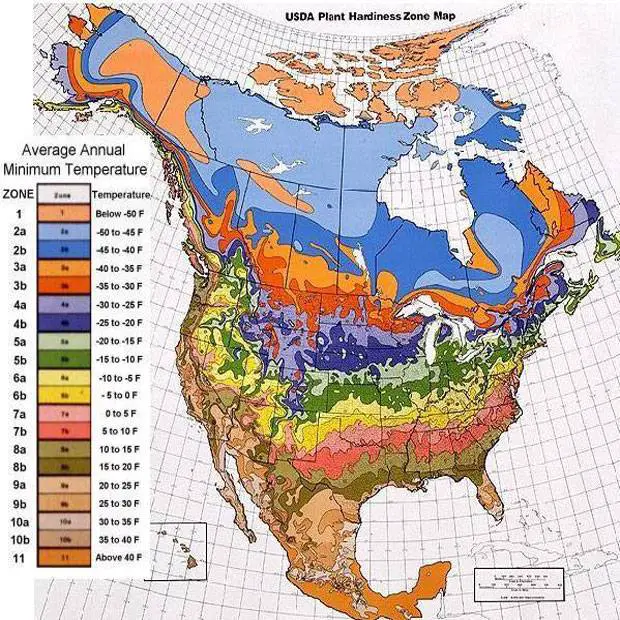Plant Hardiness Zone Maps
Gardeners Resources, Plant Hardiness Zone Maps

USDA Plant Hardiness Zone Map (North America)
According to Wikipedia, hardiness zone is a geographically defined area in which a specific category of plant life is capable of growing, as defined by climatic conditions, including its ability to withstand the minimum temperatures of the zone. For example, a plant that is described as “hardy to zone 10” means that the plant can withstand a minimum temperature of -1°C. A more resilient plant that is “hardy to zone 9” can tolerate a minimum temperature of -7°C. First developed for the United States by the Department of Agriculture (USDA), the use of the zones has been adopted by other nations.
Whew – now if you aren’t totally confused by that, we suggest you use Hardiness Zone Maps as a general guide for selecting suitable plants for your region. Use the map links below (the USDA Interactive Map is way cool) or look at the above map to locate your area and plant hardiness zone. Then when you visit your local garden centre, check the Heritage tag for that particular plant’s hardiness zone. If you are in doubt be sure to ask the staff to help you out. Keep in mind though that many other factors affect overwintering of perennials. Some of these factors include: reliability and depth of snow cover, soil moisture levels and site-specific micro-climates. Some experienced gardeners like to “push” zones but newbies should perhaps select plants within their zone in order to be more successful in their first attempts at gardening.
To find your hardiness zone in the US, we’ve provided a link to the USDA Interactive Plant Hardiness Map, just click here … you will be asked to validate a code for security purposes
Most Canadian nurseries use the USDA zoning for Canada, not the Canada Hardiness Zone Map, but for your interest and an excellent article comparing the two, visit the Natural Resources Canada Plant Hardiness Map, just click here for the link …
You can also take a look at our simplified Hardiness Table here on this site under Perennials 101, Selecting and Planting Perennials.